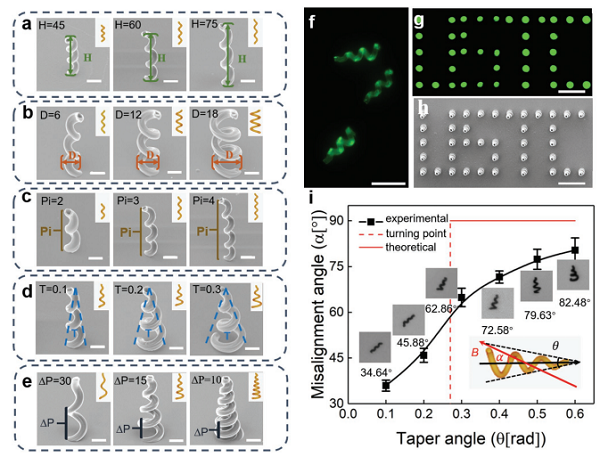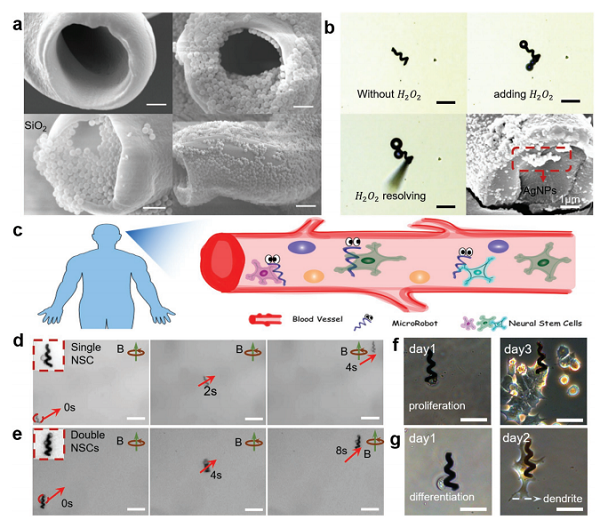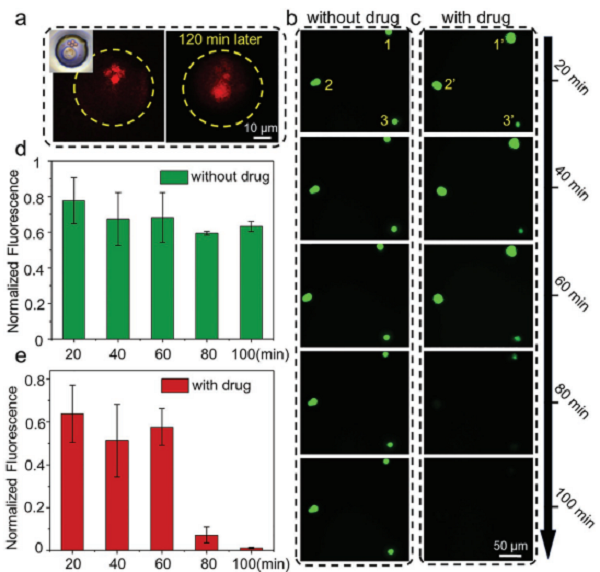In his 1959 speech, Nobel Prize winner Richard Feynman first put forward the idea of "swallowing the surgeon", which is using micro-nanorobots to perform medical procedures in the body. With the development of micro-nano fabrication technologies, the swallowable surgeon is brought to reality. Inspired by the movements of microorganisms in nature, movable artificial micro-nanorobots have attracted extensive attention due to broad application prospects in noninvasive surgery, targeted delivery, and detoxification.
Recently, scientists at the Department of Precision Machinery and Precision Instrumentation, University of Science and Technology of China (USTC) make remarkable progress in fabrication of conical hollow microhelices, tubular micromotors, and their application in targeted cargo delivery and targeted single-cell therapeutics. The results are published in Advanced Materials and Advanced Functional Materialsrespectively.
Microhelix is an ideal model for transportation in fluid environment. In their study, the research team proposed a novel kind of conical hollow microhelices and developed a method to rapidly fabricate these microhelices with controllable parameters by femtosecond vortex beams generated from spatial light modulation along helical scanning.

3D designable hollow microhelix fabrication by produced computer-generated hologram. (Image by XIN Chen, YANG Liang)
Compared with straight microhelices, the forward swimming capability of conical microhelices increases by 50% and the lateral drift is reduced by 70%. The capabilities of these conical hollow microhelices for nanocargo loading and release, as well as transportation of neural stem cells are demonstrated.

Nanoparticles and neural stem cells loading, transporting, and releasing. (Image by XIN Chen, YANG Liang)
On the other hand, the method to fabricate microhelices can also be used to fabricate tubular micromotors, which are applied in encapsulation and transportation of cells as a simple and maneuverable tool. The research team fabricate magnetic 3D tubular micromotors by single exposure of structured optical vortices in a magnetic photoresist. The size and geometry of fabricated microtubes are flexibly controlled in three dimensions.

One step synthesis of 3D biconical microtubes with single exposure of femtosecond optical vortex. (Image by YANG Liang)
Precise propelling of the tubular micromotors and precise capture, targeted delivery, and release of SiO2 microparticles are realized. In situ observation of the development of doxorubicin in Hela cells for therapeutic study is performed by targeted delivery of single cells and drug particles.

In situ observation of the development of doxorubicin in targeted Hela cells and the treatment effect. (Image by YANG Liang)
These studies are supported by the National Science Foundation of China and Chinese Academy of Sciences, and were partly carried out at the USTC Center for Micro and Nanoscale Research and Fabrication. The technologies developed are simple and stable, which have promising applications in targeted cell therapy, drug screening and delivery, single cell studies, and other biomedical areas.
(Written by YANG Ziyi, edited by HU Dongyin, USTC News Center)